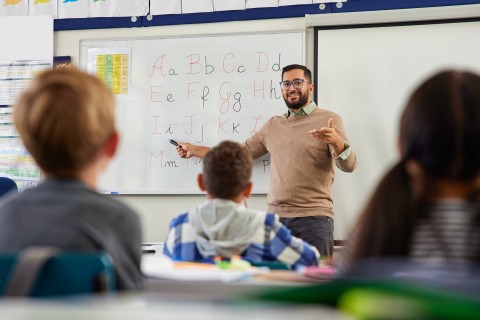When Reading Fails, So Does the Future

Children who aren’t reading proficiently by third grade are four times more likely to drop out of high school, yet today, about one-third of Kansas students still read below grade level. With Kansas poised to add 54,000 new jobs by 2030, 80% of which will require education beyond high school, improving early literacy isn’t optional; it’s essential.
Where we stand today
Back in April 2024, the Kansas Board of Regents adopted the Blueprint for Literacy, later enacted as SB 438, establishing literacy as a top-tier state priority. Implementation is well underway:
- By April 2025, all public university educator programs rolled out foundational “Science of Reading I & II” courses, with in-service structured literacy training launching by summer and fall of 2025.
- Over 3,700 educators completed LETRS (Language Essentials for Teachers of Reading and Spelling), and nearly 9,800 are enrolled out of an estimated 18,700 needed for full coverage by 2030.
- Kansas allocated $10 million to support Blueprint rollout, but recent budget shifts forced the Advisory Committee to prioritize high-impact training over establishing Centers —though six Centers for Excellence in Literacy proposals are in progress.
What the Blueprint does
SB 438 aims high: 100% of elementary teachers earning credentials in structured literacy by 2030, 90% of 3rd–8th grader students reaching basic or above, and 50% achieving proficient or advanced reading levels. The bill tries to meet these goals through various means.
- Mandatory micro-credentials in the science of reading via higher education and professional development.
- Structured higher education curriculum and assessments.
- An Office of Literacy, a Director, a Literacy Advisory Committee, and six regional Centers for Excellence.
Kansas in the national context
Kansas is not alone in tackling early literacy, and there’s a growing body of evidence from other states showing what works when it comes to getting literacy right.
In Mississippi, strategic investments in teacher training and phonics-based instruction have transformed the state into a national leader. Through the Literacy-Based Promotion Act, Mississippi paired third grade reading benchmarks with real classroom support like reading coaches and structured literacy curriculum. Today, Mississippi’s fourth graders outperform the national average on NAEP reading scores, a remarkable shift for a state that once ranked near the bottom.
Florida has long been seen as a pioneer in early literacy policy. The state's Just Read, Florida! initiative introduced early reading screenings, interventions, and statewide accountability measures that helped the state post some of the strongest NAEP reading gains in the early 2000s. Florida’s consistent focus on foundational reading skills remains a model cited by education researchers and policy leaders nationwide.
Alabama offers another compelling example. Since passing the Alabama Literacy Act in 2019, the state has focused heavily on educator development. Thousands of K–3 educators have completed LETRS training, and the state has built a strong system of support that includes early identification, intervention, and coaching. Even during the challenges of the pandemic, Alabama’s early reading scores held steady suggesting their approach is building both skill and resilience.
In Kansas, we’re taking a wide-ranging approach. With the passage of SB 438 and the launch of the Blueprint for Literacy, the state has made structured literacy and teacher preparation a central focus. As this work progresses, we’ll be following key milestones like teacher training participation and student performance on state and national assessments to understand where progress is being made and where more support may be needed. The Blueprint provides a starting point, and sustained focus on outcomes will be critical to turning its promise into lasting impact.
Beyond the classroom, Kansas is also working to build a culture of literacy starting in early childhood. One of the most encouraging efforts is the statewide expansion of Dolly Parton’s Imagination Library, which mail free, age-appropriate books to children from birth to age five. Thanks to a partnership between the Kansas Children’s Cabinet and the Imagination Library Foundation, every zip code in Kansas is now eligible to participate. This initiative plays a critical role in increasing early access to books, especially for families who may not have them at home.
What We Can Do Next
To ensure Kansas hits these targets, we must:
- Track and report on progress. Use data to measure Kansas’s growth from policy adoption to classroom impact and adjust where needed.
- Involve families and communities. Provide tools and opportunities for parents and caregivers to support early reading at home, aligned with what students are learning in school.
- Expand educator training. Ensure more teachers gain access to high-quality micro-credentials and structured literacy programs like LETRS.
Investing in literacy is investing in Kansas’s future. When every child learns to read with confidence, our state builds a stronger foundation for success.
Aligned’s Take: Kansas is taking research-based steps to improve early literacy through the Blueprint for Literacy and SB 438, with a focus on structured teacher preparation, progress tracking, and statewide support systems. Although early implementation is encouraging, sustained investment, family engagement, and measurable outcomes will be essential to ensuring all Kansas students become confident readers.